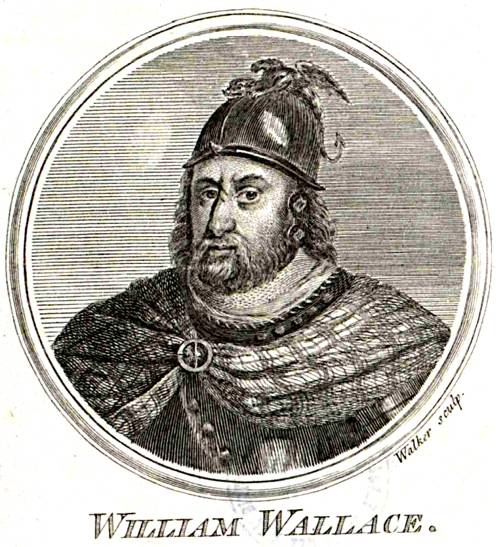
FAQ About William Wallace

Who was William Wallace?
William Wallace was a Scottish knight and a prominent leader during the Wars of Scottish Independence. He is best known for his role in resisting English rule over Scotland in the late 13th and early 14th centuries. Wallace became a symbol of Scottish nationalism and independence.

What is William Wallace most famous for?
William Wallace is most famous for his leadership in the Scottish resistance against English domination, particularly the victory at the Battle of Stirling Bridge in 1297. He is also well-known due to his portrayal in the film 'Braveheart.'

What was the Battle of Stirling Bridge?
The Battle of Stirling Bridge, fought on 11 September 1297, was a significant Scottish victory during the Wars of Scottish Independence. Led by William Wallace and Andrew Moray, the Scots defeated a larger English army by utilizing strategic advantage at a narrow bridge over the River Forth.

What is the significance of the Battle of Stirling Bridge?
The Battle of Stirling Bridge marked one of the first major victories for the Scottish forces against England. It boosted Scottish morale and Wallace's reputation as a military leader, proving that the Scots could defeat the much stronger English forces.

Was William Wallace ever captured by the English?
Yes, William Wallace was captured by the English on 5 August 1305, near Glasgow. He was betrayed and handed over to King Edward I, who had him tried and executed for treason and other charges.

How did William Wallace die?
William Wallace was executed by the English on 23 August 1305. He was taken to London, tried for treason, and brutally executed. Wallace was hanged, drawn, and quartered, a common punishment for traitors at the time.

What are the main sources of information about William Wallace?
The primary sources about William Wallace's life include historical chronicles like John of Fordun's Chronica Gentis Scotorum and the poem The Wallace by Blind Harry, written in the 15th century. However, these sources are often considered biased or embellished.

Is the movie 'Braveheart' historically accurate?
While 'Braveheart' brought William Wallace's story to international attention, it contains numerous historical inaccuracies. Some events, characters, and timelines were altered for dramatic effect, which does not accurately reflect historical records.

What role did William Wallace play in the Wars of Scottish Independence?
William Wallace was a central figure in the Scottish resistance against English rule. After the capture of Berwick and the defeat of the Scots at Dunbar, Wallace emerged as a leader of the rebellion, famously winning the Battle of Stirling Bridge and organizing raids against English garrisons.

What was William Wallace's early life like?
Very little is known for certain about William Wallace's early life, including his exact birth date and family details. He is believed to have been born around 1270 in Renfrewshire, Scotland. Details of his early life are mostly derived from legends and later chronicles.

Why did William Wallace become a symbol of Scottish nationalism?
William Wallace became a symbol of Scottish nationalism due to his unwavering commitment to fighting for Scotland's independence from English rule. His leadership in battle and eventual martyrdom solidified his status as a national hero and icon of freedom.

How did William Wallace impact subsequent leaders, like Robert the Bruce?
Wallace's resistance efforts and his martyrdom inspired subsequent leaders, including Robert the Bruce, to continue the struggle for Scottish independence. Wallace's legacy laid the groundwork for the eventual victory at the Battle of Bannockburn in 1314, under Bruce's leadership.

What are some common misconceptions about William Wallace?
One common misconception is that Wallace wore a kilt, as depicted in 'Braveheart.' Kilts were not worn in Scotland during Wallace's time. Additionally, the film's portrayal of Wallace's love life is largely fictitious. Wallace's real-life marriage and personal life are not well-documented.

Why was William Wallace executed for treason?
William Wallace was executed for treason because he led a rebellion against King Edward I of England. Despite being born a Scot and arguably having no loyalty to the English crown, he was declared a traitor as Scotland was considered by Edward to be under his rule.

What legacy did William Wallace leave behind?
William Wallace left a legacy as a symbol of freedom and resistance against oppression. His life inspired generations of Scots and his story became a rallying point for Scottish national identity and the quest for independence.

What was Blind Harry's 'The Wallace'?
'The Wallace' is an epic poem written by Blind Harry in the 15th century. It narrates the life and exploits of William Wallace and is a significant source of his legend, although it contains many embellishments and fictional elements.

Did William Wallace have any known family?
While specific details about William Wallace's family are scarce, it is believed that he was born into a minor noble family. His father is often identified as Sir Malcolm Wallace of Elderslie, although historical records on his family are not definitive.

How did Wallace's execution affect the Scottish fight for independence?
Wallace's execution further fueled Scottish resistance against English rule. Rather than demoralizing the Scottish populace, it galvanized the cause, leading to continued efforts under leaders like Robert the Bruce, who ultimately succeeded in gaining Scottish independence.

What role did Wallace play in the Battle of Falkirk?
William Wallace led the Scottish army at the Battle of Falkirk on 22 July 1298, facing King Edward I's forces. Despite Wallace's efforts to employ defensive tactics, the Scots were decisively defeated due to the English use of longbowmen. This battle affected Wallace's command, leading him to resign as Guardian of Scotland.

Where can we see memorials dedicated to William Wallace today?
The most prominent memorial dedicated to William Wallace is the National Wallace Monument near Stirling, Scotland. This tower celebrates his legacy and overlooks the site of the Battle of Stirling Bridge. Additionally, numerous statues and plaques honoring Wallace can be found throughout Scotland.
